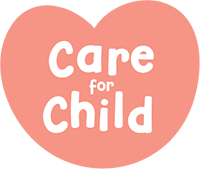Potty training is a monumental step in a child's development, marking their transition from diapers to toilet use. However, this exciting journey can sometimes be marred by diaper rash discomfort. In this Care For Child guide, we'll delve into the causes of diaper rash during potty training, effective prevention strategies, and gentle home remedies to alleviate discomfort and promote healthy skin.
Understanding Potty Training:
Potty training, also known as toilet training, teaches young children to use the toilet for urination and defecation instead of relying on diapers. It is a developmental milestone typically achieved between 18 months and 3 years old, although the timing can vary widely among children. Potty training involves teaching children to recognise the need to use the bathroom, control their bladder and bowel movements, and independently use the toilet. It often requires patience, consistency, and positive reinforcement from caregivers to help children successfully transition from diapers to using the toilet.
When to Start Potty Training:
Knowing when to start potty training can be pivotal for parents and toddlers. While there's no one-size-fits-all answer, recognising the signs of readiness is critical. Typically, toddlers show readiness between 18 and 36 months, but some may be ready earlier or later. Look for cues such as staying dry for extended periods, showing interest in the toilet or potty, expressing discomfort with wet or soiled diapers, and demonstrating the ability to follow simple instructions. Remember that readiness is individual, and it's essential to consider your child's unique developmental pace and temperament. Starting potty training when your child is genuinely ready can lead to a smoother and more successful transition from diapers to using the toilet independently.
What Causes Diaper Rash During Potty Training?
Potty training diaper rash can be a distressing experience for both toddlers and parents. Understanding what causes diaper rash during this phase can help effectively address and prevent it. Potty training introduces several factors that can contribute to the development of potty training diaper rash:
- Friction and Irritation: When toddlers transition from diapers to underwear or training pants during potty training, the friction caused by these garments against the delicate skin of the groyne area can lead to irritation and redness. Tight-fitting or poorly-fitting diapers can exacerbate this friction, causing discomfort and increasing the risk of diaper rash while potty training. Use SuperBottoms UNO Cloth Diaper for a rash free and comfortable fit.
- Moisture Exposure: Accidents during potty training, where the child urinates or has bowel movements in their underwear, can result in prolonged exposure to moisture against the skin. Inadequate wiping or incomplete cleaning after using the toilet can also leave moisture on the skin, contributing to the development of diaper rash while potty training.
- Dietary Changes: Introducing new foods to a toddler's diet during the potty training phase can change stool composition and frequency. Certain foods may cause more acidic or irritating stools, increasing the likelihood of diaper rash if not promptly cleaned and changed.
- Sensitivity to Products: Some toddlers may have sensitive skin that reacts to the chemicals, fragrances, or dyes present in detergents, wipes, or even the materials used in underwear or training pants. Exposure to these irritants can result in skin inflammation and contribute to the development of diaper rash. Use SuperBottoms XtraHydrating Wipes made with 0% chemicals and added fragrances.
- Prolonged Contact with Urine and Stool: During potty training, toddlers may not always recognise the need to use the toilet in time, leading to accidents where urine or stool comes into contact with the skin for an extended period. Prolonged exposure to urine and stool can irritate the skin and compromise its natural protective barrier, making it more susceptible to diaper rash.
Prevention Tips to Keep Diaper Rash at Bay:
Preventing diaper rash during potty training involves proactive measures to maintain skin health:
Home Remedies for Soothing Diaper Rash:
When diaper rash potty training occurs, gentle home remedies can provide relief and aid in healing:
Benefits of Addressing Diaper Rash During Potty Training:
Addressing diaper rash during potty training offers numerous benefits to your diaper rash potty-trained child:
Key Takeaways:
- Potty training is an exciting milestone in your child's journey towards independence.
- While diaper rash may occasionally occur during this process, understanding its causes and implementing preventive measures can help minimise discomfort and promote healthy skin.
- By prioritising gentle skincare, prompt diaper changes, and proactive measures, you can navigate potty training confidently and efficiently, ensuring a positive experience for you and your child.
FAQs:
When should I start potty training my child?
Ans. Every child is different, but most toddlers show signs of readiness between 18 and 36 months. Look for cues like staying dry for extended periods, showing interest in the toilet, and expressing discomfort with wet diapers.
How do I know if my child is ready for potty training?
Ans. Look for physical and behavioural signs of readiness, such as staying dry for extended periods, showing interest in the toilet, expressing discomfort with wet or soiled diapers, and demonstrating the ability to follow simple instructions.
What are some effective potty training strategies?
Ans. Establish a consistent potty routine, use positive reinforcement and rewards for successful attempts, lead by example, make potty training fun with books, songs, and games, and be patient and supportive throughout the process.


